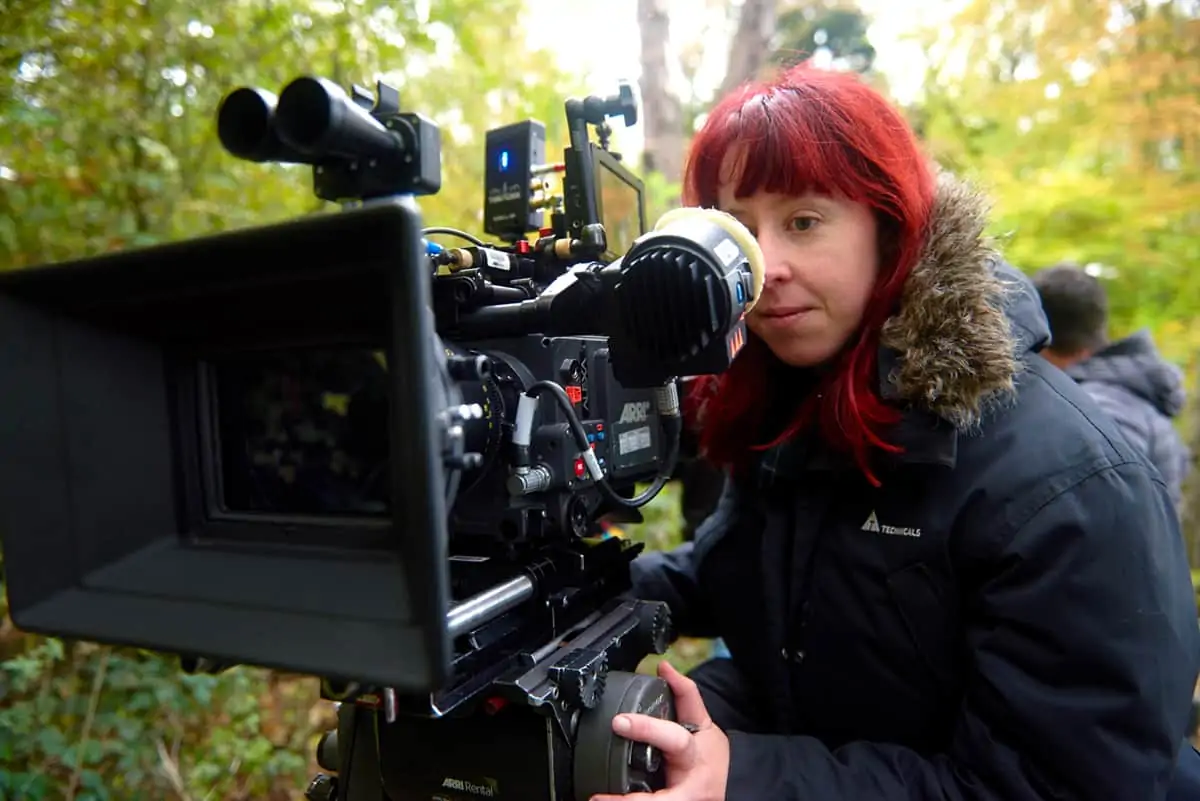Nicola Daley ACS on Pin Cushion
Aug 23, 2018

Nicola Daley ACS is Australia’s eighth female member of the Australian Cinematographer Society, and is known for her prowess with deeply evocative material. She’s been a member of BAFTA Crew since 2015, after being chosen for the WFTV UK Mentor Scheme in 2015, writes Meredith Emmanuel.
Boasting a long career in short films and documentaries, Daley is currently gaining kudos for her work on director Deborah Haywood’s debut feature Pin Cushion. Daley brings an otherworldly pastel and neon gossamer to this deeply personal and unfaltering film, which moves and shocks in equal measure. The film is currently rating 100% on Rotten Tomatoes.
Shot on location in Swadlincote, Derbyshire, Pin Cushion tells the story of an idiosyncratic mother-daughter couple. Iona (Lily Newmark), and her eccentric, single-mum Lyn (Joanna Scanlan), are thrilled to move to a new town in the Midlands, after ‘possibly’ living their former lives ‘in the forest’. They are quirky, co-dependent and a tad kooky. Both characters attempt to find new friendships, but navigating the complex worlds of high school girls and yuppie mums doesn’t come easily, and both are bullied, with unexpected consequences. Iona and Lyn withdraw into their own fantasy worlds, as a way of protecting themselves from the blows and bruises.
Pin Cushion is already a festival favourite. It received its world premiere during the 2017 Venice Film Festival Critics’ Week, won Best Feature at the Créteil International Women’s Film Festival, and garnered nominations at the British Independent Film Awards, the Evening Standard British Film Awards, and the Glasgow Film Festival. The movie opened on July 13 in the UK and on July 20 in the US.


“Deborah is a genius with presenting a world that is slightly tilted,” says Daley. “She uses a lot of high-angle shots, which were influenced by the photography of Alex Prager. Another key reference was the photography of William Eggleston. His use of colour was integral to how I approached colour in the film. Eggleston would twist colours under mixed lighting. Because the characters in the story are marginalised and pushed to the edges of society, I wanted to mirror this through the use and journey of colour in the visual landscape of the film.
“As our characters become more and more pushed by their respective bullies to their limits, so do the colours of the film. Compositionally, the character of Iona also gets pushed to the edges of the frame as her journey seems to become hopeless.
Daley also notes, “Deborah wanted to wrap the story in a fairytale aesthetic. Often those tales, like Sleeping Beauty or Hansel & Gretel, have harsh, horrible things happen. Deborah is really interested in the tonality of those tales. So we took those tones into the visual language of the film and the design of the lighting.
“The film has several fantasy sequences, and I wanted to differentiate them from the reality of everyday life, but also tie them together so all the fantasy sequences had a common thread. The thread is the aquamarine gel, which I used through the lighting. It ties them together, but also gives a pastel gauziness to the fantasy sequences.

“I also used different star filters, which are quite ‘70s really. I loved them! They’re not very fashionable at the moment, but are perfect for this hazy fairytale look. There are also a couple of orgasm scenes when Iona starts to discover her sexuality. For those we used an old piece of a glass chandelier in front of the lens to fragment Iona’s face and to give it that dreamlike, other worldly look. This multiple image of her serves so many story elements – who she is, and who she’s becoming as she moves away from the innocence of childhood and almost wrenches herself away from under her mother’s wing.”
The production shot 1.85:1 spherical, Pro Res 4444 XQ, with Alexa XT Plus and Super Baltar prime lenses, provided by ARRI Rental UK. Lights came from KG Lighting, London.
Daley did extensive lens tests before filming and loved the look of the recently rehoused Super Baltars. “They didn’t match at all and I love that!” she enthuses. “They were creamy and warm and these lenses had been used on the 1970s’ film Carrie (1976, dir. Brian de Palma, DPs Mario Tosi/Isidore Mankofsky), which was a huge influence. Those lenses combined with Iona’s beautiful skin made her almost bloom, fitting right into that fairytale look we had envisioned.”

“Along with the star filters and the old chandelier crystal, the use of filters on this film was extensive. I used old film colour correction filters as pure colour filters. So I used the old 85 and 80A filters to give an orange or an icy blue cast to a scene. For example, we wanted the corner shop to be an icy blue colour and the 80A filter was perfect. I love repurposing the tools we use in cinematography – twisting them, using them for applications other than what they were originally intended.
Crew included: Jason Henwood, 1st AC; Nick Armstrong, camera trainee, Cecile Mulombe, 2nd AC; Andrew Fletcher, Steadicam; John Wenman, gaffer; Fabio Alsonso, 1st electrician; Stephen Peat, grip assistant and Grace Donaldson, grip.
The colourist was John Claude, and the DI was completed at Dirty Looks in London.



















